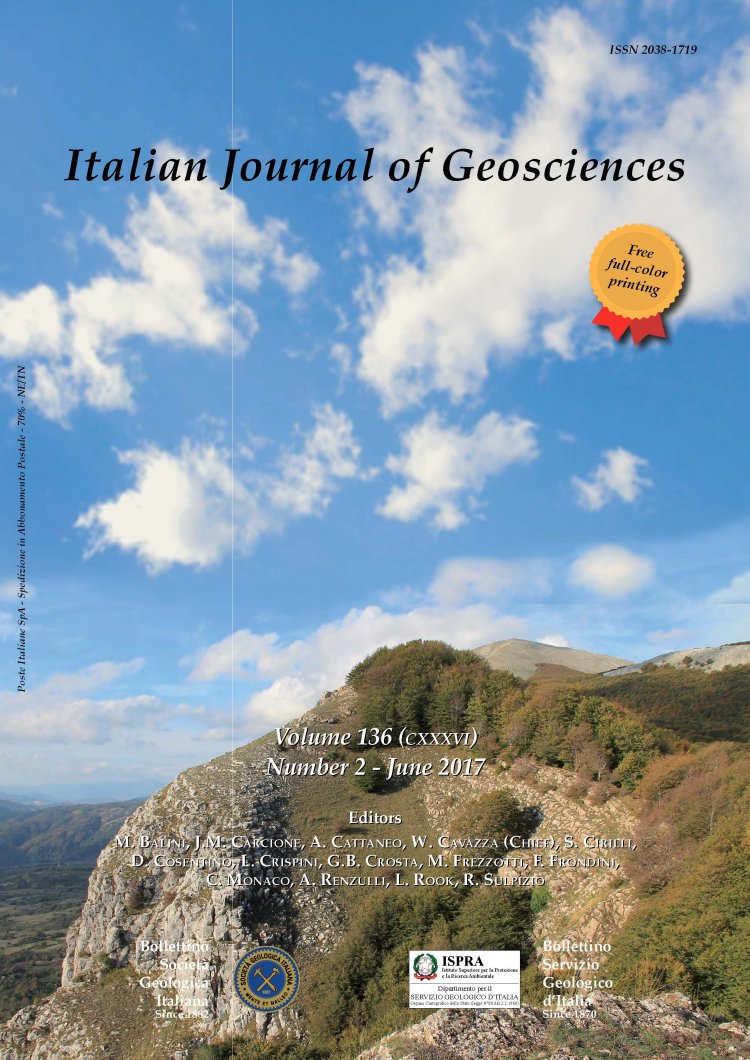
Calcareous nannofossil biostratigraphy: a tool for understanding the stratigraphic evolution of the Mt. Modino Unit (Northern Apennines, Italy)
Alessandra Marchi (1), Rita Catanzariti (2) & Luca Pandolfi (1)(2)
(1) Dipartimento di Scienze della Terra, Università di Pisa, Via S. Maria, 53 – 56126 Pisa, Italy.
(2) Istituto di Geoscienze e Georisorse, CNR Pisa, Via G. Moruzzi, 1 – 56124 Pisa, Italy. Corresponding author e-mail: pandolfi@dst.unipi.it.
DOI: https://doi.org/10.3301/IJG.2016.13
Volume: 136 (2017) f.2
Pages: 171-185
Abstract
The Mt. Modino Unit succession (Northern Apennines) is mainly composed of turbiditic sediments deposited during the collisional and post-collisional stages of the Northern Apennines fold-and-thrust belt. Within this succession we have studied a thick interval of shales with arenitic beds, marls and arenites, of the Fiumalbo Shale, the Marmoreto Marl and the Mt. Modino Sandstone formations. Calcareous nannofossil assemblages of the eight investigated stratigraphic sections contain middle-late Eocene to Oligocene-early Miocene biozones. Zones CNE12 to MNN1 have been identified through quantitative analyses of a set of 200 samples, and the precise ages of the Fiumalbo Shale, the Marmoreto Marl and the Mt. Modino Sandstone were identified as well.
The biostratigraphic analyses enable stratigraphic correlations between the investigated sections which were used to propose a stratigraphic architecture of the Mt. Modino Unit succession.
Physical and biostratigraphic data available for the Mt. Modino Unit succession suggest a subsiding wedge-top basin fed since the Rupelian by both Apennine and Alpine sources. After the late Oligocene shortening phase, the Mt. Modino Basin occupied the inner part of the foredeep basin, sharing the same turbiditic deposits with the Macigno formation.
The biostratigraphic analyses enable stratigraphic correlations between the investigated sections which were used to propose a stratigraphic architecture of the Mt. Modino Unit succession.
Physical and biostratigraphic data available for the Mt. Modino Unit succession suggest a subsiding wedge-top basin fed since the Rupelian by both Apennine and Alpine sources. After the late Oligocene shortening phase, the Mt. Modino Basin occupied the inner part of the foredeep basin, sharing the same turbiditic deposits with the Macigno formation.
Keywords
Get Full Text Supplementary Material